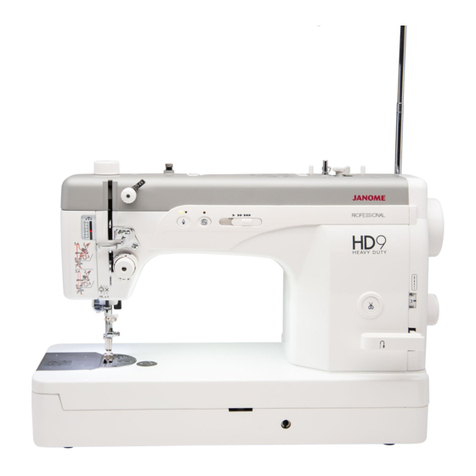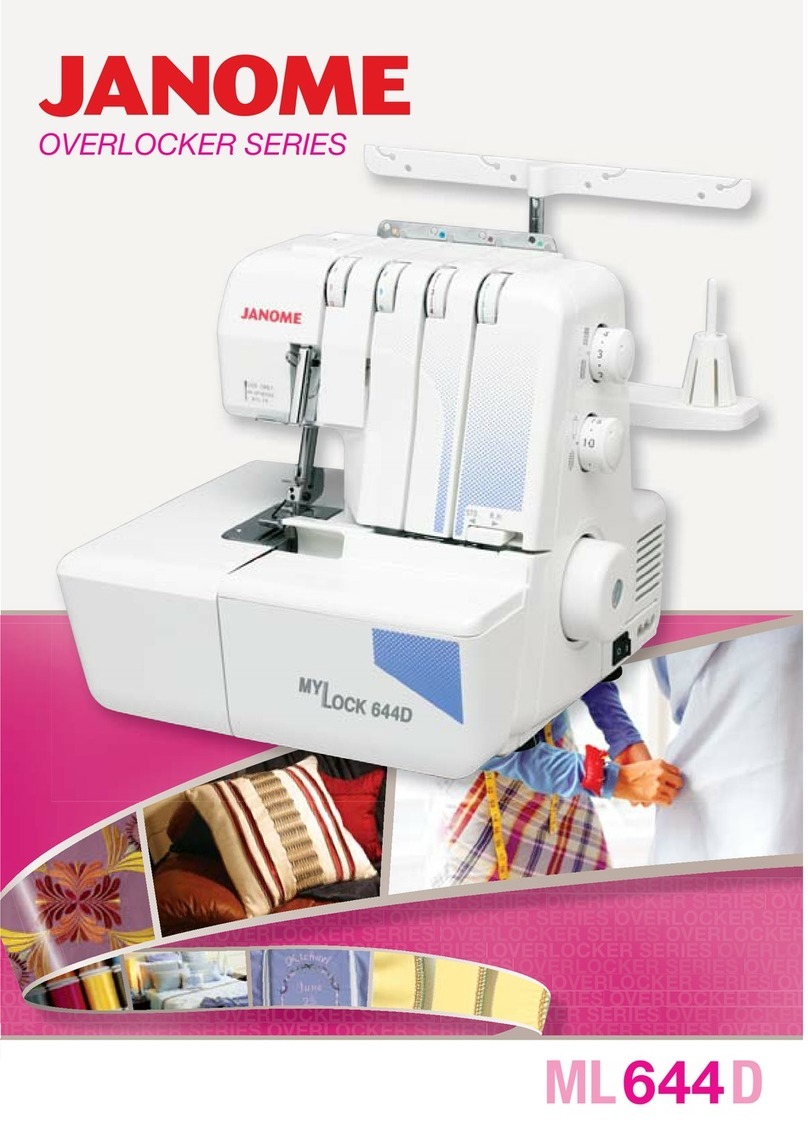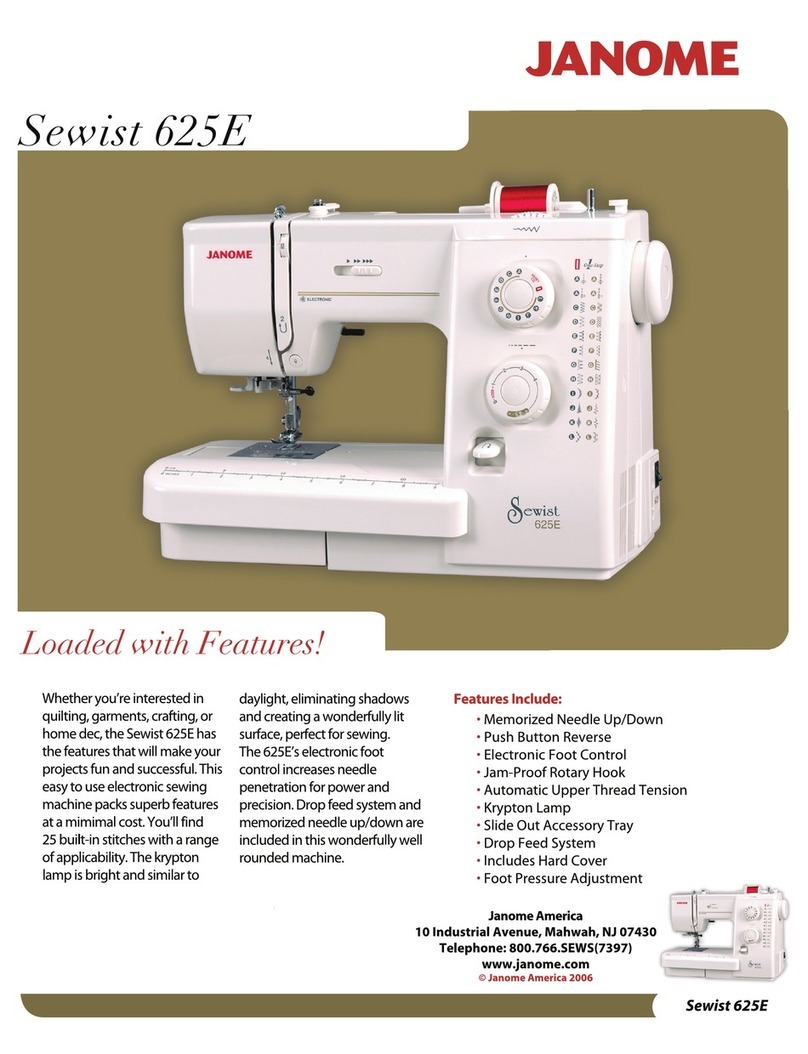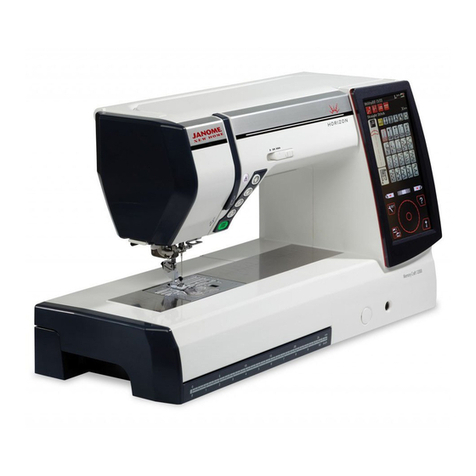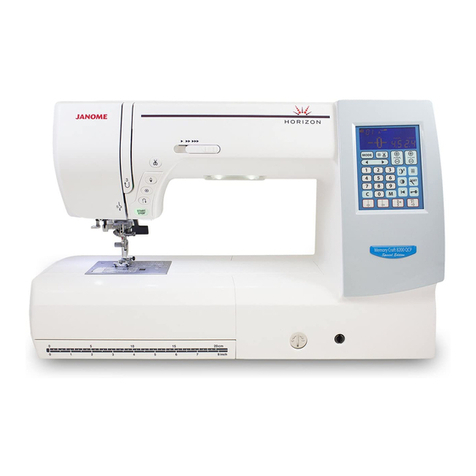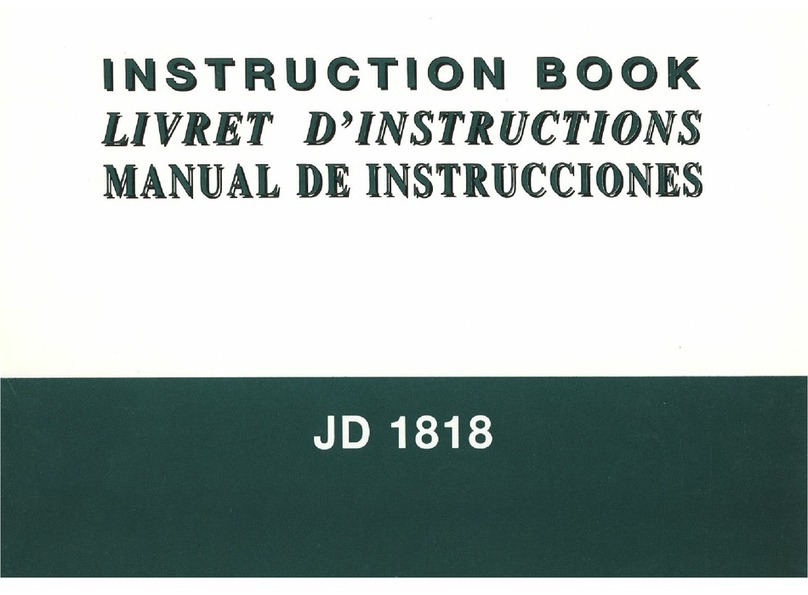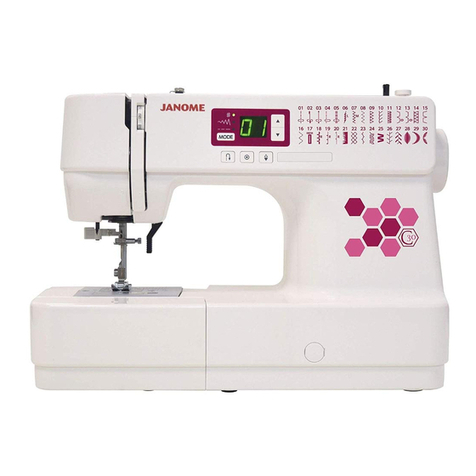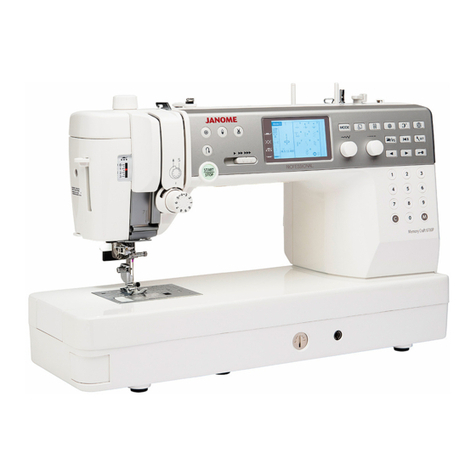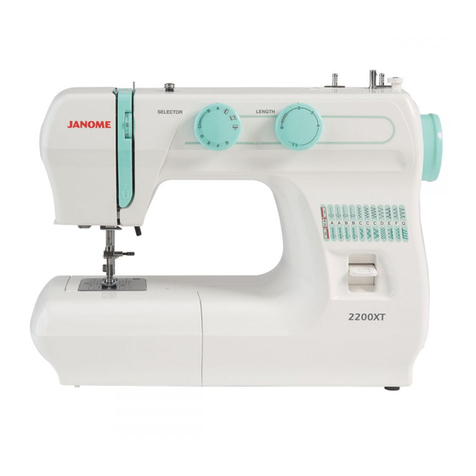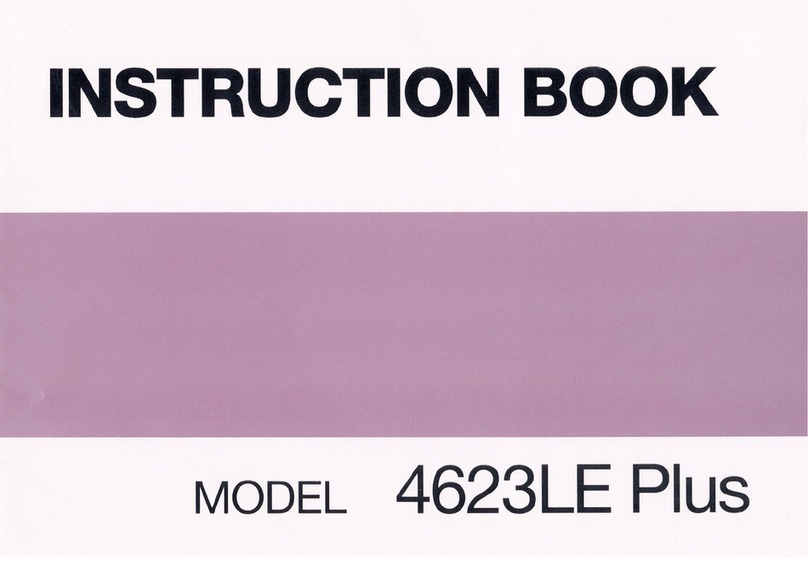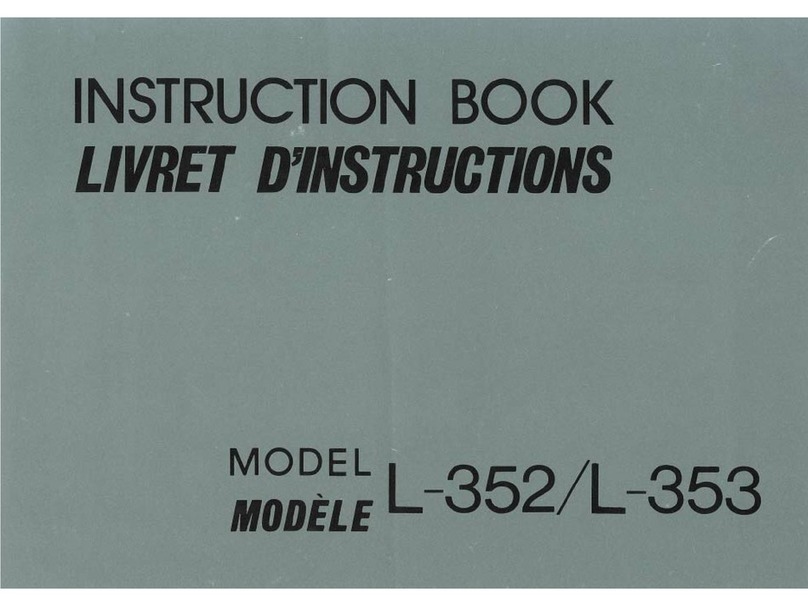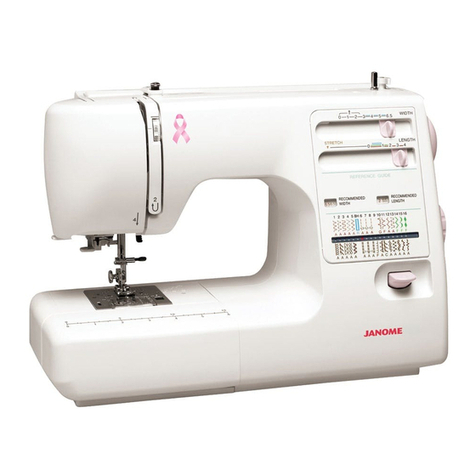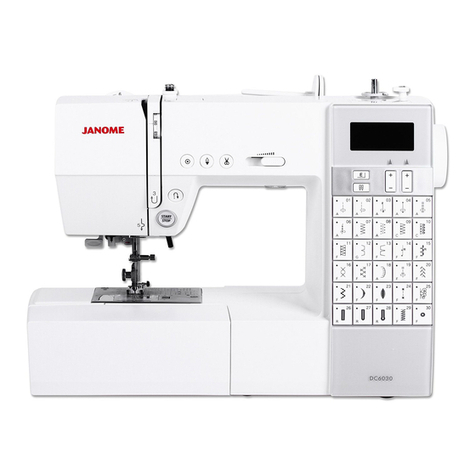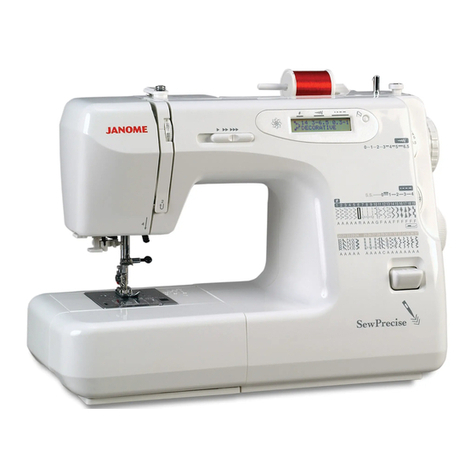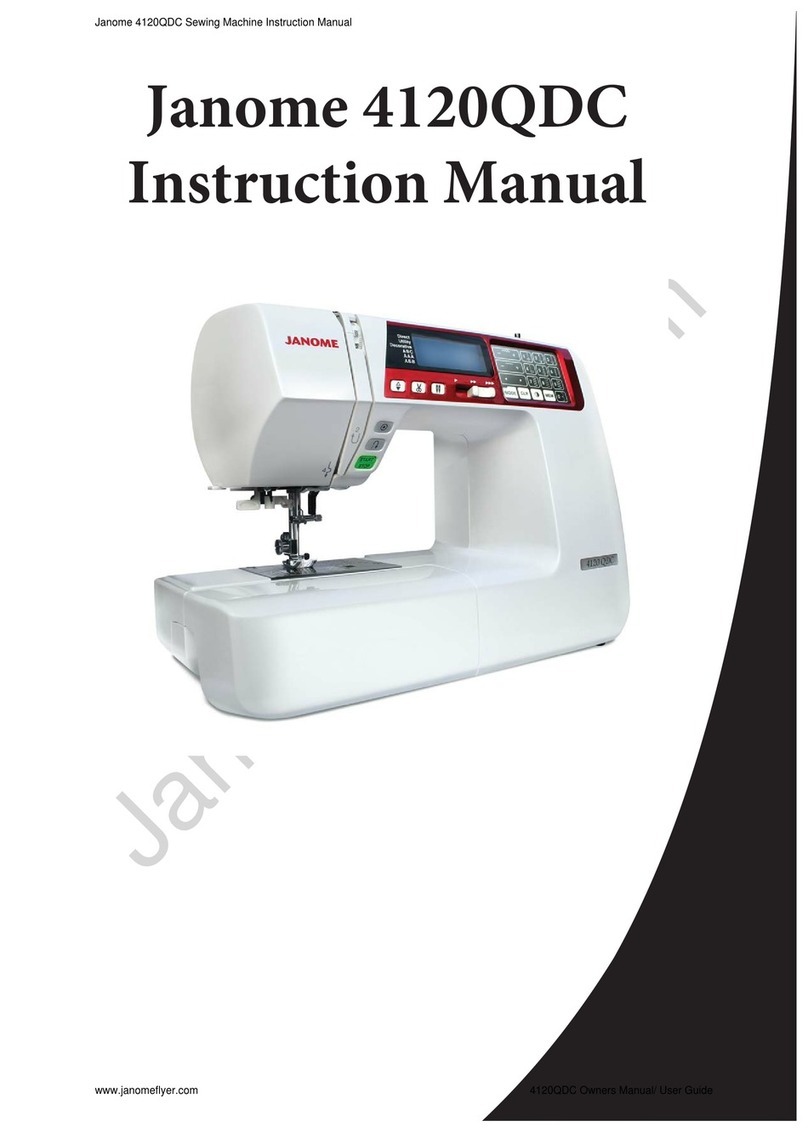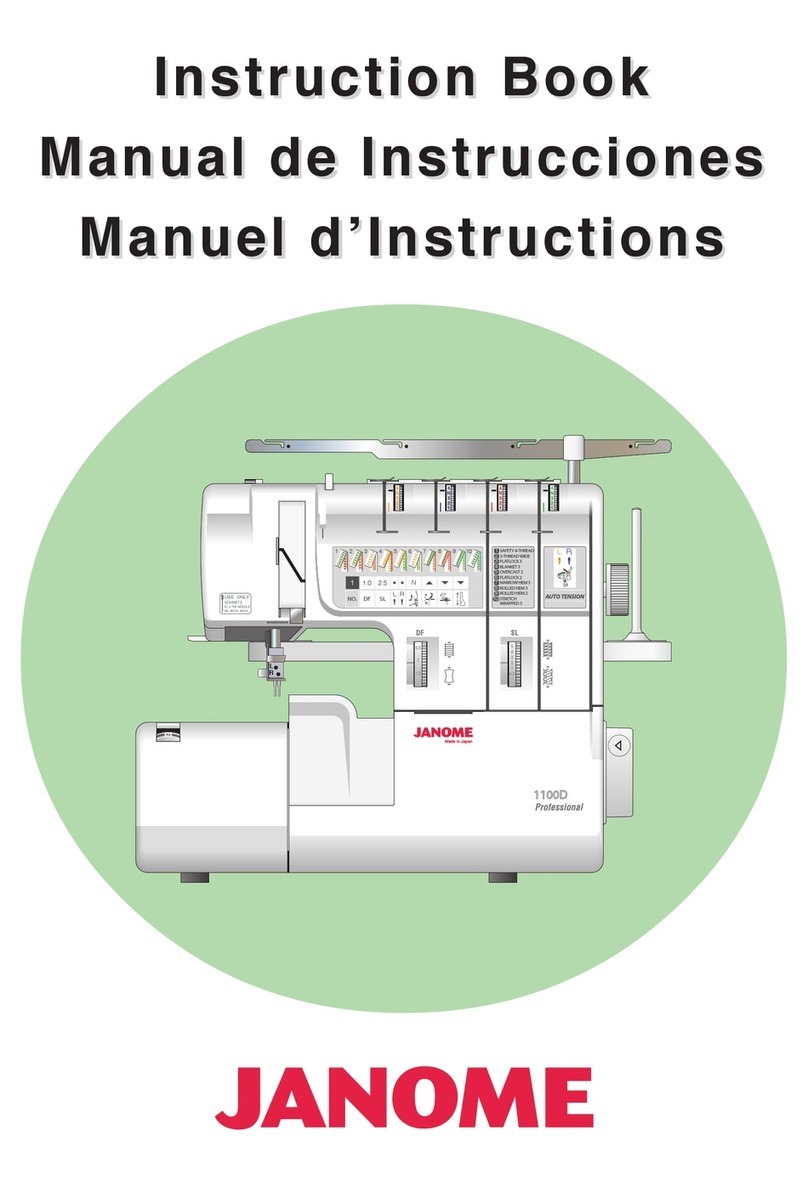
TABLE OF INSTRUCTION
SECTION I. NAMES OF PARTS
Names of Parts................................................................. 1
Standard Accessories ...................................................... 2
Large Extension Table...................................................... 2
Extension Table................................................................ 3
SECTION II. GETTING READY TO SEW
Connecting the Power Supply .......................................... 4
Before Using Your Sewing Machine................................. 4
Controlling Sewing Speed................................................ 5
Machine Operating Buttons........................................... 6-8
Removing and Attaching the Foot Holder ........................ 9
Changing the Presser Foot .............................................. 9
Presser Foot Lifter............................................................ 9
Presser Foot Pressure Dial .............................................. 9
Dropping or Raising the Feed Dog..................................10
Changing the Needle.......................................................11
Fabric and Needle Chart .................................................11
Bobbin Winding .......................................................... 12-14
Threading the Machine....................................................15
Needle Threader .............................................................16
Drawing up the Bobbin Thread........................................17
LCD Display.....................................................................18
Selecting Stitch Patterns .................................................18
Adjusting the Needle Thread Tension for a Straight
Stitch .............................................................................19
Adjusting the Needle Thread Tension for a Zigzag
Stitch ............................................................................ 20
SECTION III. BASIC SEWING
Straight Stitch Sewing ............................................... 21-22
Turning Square Corners ................................................. 21
Sewing from the Edge of Thick Fabric ........................... 21
Needle Plate................................................................... 22
Straight Stitch................................................................. 23
Lock-a-Matic Stitch......................................................... 23
Locking Stitch................................................................. 23
Triple Stretch Stitch ........................................................ 23
Stretch Stitch .................................................................. 24
Zigzag Stitch................................................................... 25
Overcasting with Zigzag Stitch....................................... 26
Multiple Zigzag ............................................................... 26
Overedge Stitch.............................................................. 26
Knit Stitch ....................................................................... 27
Double Overedge Stitch ................................................. 27
Zipper Sewing ........................................................... 28-29
Blind Hemming ............................................................... 30
Button Sewing ................................................................ 31
Attaching Elastic............................................................. 32
Various Kinds of Buttonholes and Their Uses................ 33
Square Buttonhole..................................................... 34-35
Adjusting the Stitch Width and Density for
Buttonholes .................................................................. 36
Round-End Buttonhole................................................... 36
Fine Fabric Buttonhole ................................................... 36
Keyhole Buttonhole ........................................................ 37
Stretch Buttonhole.......................................................... 37
Antique Buttonhole......................................................... 37
Corded Buttonhole ......................................................... 38
Darning Stitch................................................................. 39
Tacking ........................................................................... 40
Eyelet.............................................................................. 40
SECTION IV. DECORATIVE STITCHING
Shelltuck Stitch................................................................41
Applique ..........................................................................41
Scallop Stitch ................................................................. 42
Smocking........................................................................ 42
Pintucking....................................................................... 42
Patchwork Piecing.......................................................... 43
Stippling Stitch................................................................ 43
Clasp Stitch .................................................................... 44
Fagoting.......................................................................... 44
Satin Stitches ................................................................. 44
Fringing........................................................................... 45
Drawn work .................................................................... 45
Cross Stitch .................................................................... 46
Decorative Stitches ........................................................ 46
Correcting Distorted Stitch Patterns................................47
SECTION V. CARE OF YOUR MACHINE
Cleaning the Hook Race and Feed Dog ........................ 48
Installing the Bobbin Holder ........................................... 48
Problems and Warning Signs......................................... 49
Troubleshooting.............................................................. 50

